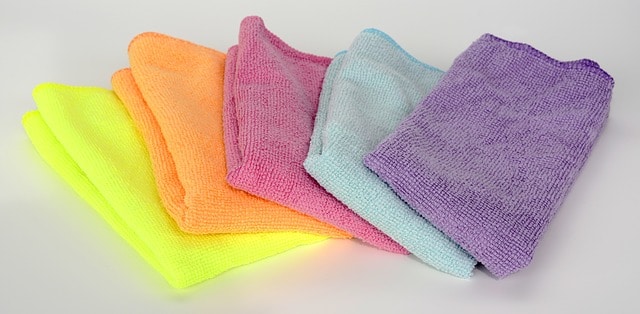Understand Steel Types for Handpans: Nitrided, Stainless & Ember
Steel is used to make handpans. There are three different types used to create a handpan: nitrided steel, the ever-growing in popularity stainless steel, and most latterly ember steel. It seems today we are seeing everyone making stainless steel as it has the ability to withstand rusting and aging better than other types of steel.
This article will explain each type of steel in handpans more in-depth, including its effects on rust and aging over time, and may help you make your final choice of material for your first, or next handpan.
Examples of the difference between nitrided, stainless, and ember steel
Dean Richardson at Zephyr handpans in the UK is one of the world’s best handpan creators. I am using some youtube videos of his creations because he has made my current favorite F2 low Pygmy scale in each of the three steel examples.
Take a listen to each, preferably with good quality headphones.
Warning: You are going to love this scale so much you might forget to listen for the differences. You will definitely want to own one straight away.
Nitrided Steel Example
This is the ‘traditional’ sound of a handpan created with nitrided steel. Whilst not obvious to begin with and probably highlighted after hearing the stainless steel examples, you’ll understand what is described as a ceramic sound that is not present with SS types. This is especially apparent in the shoulder tones of the ding.
Nitrided steel will produce higher frequencies in the sound, meaning it will cary further than stainless, particularly outdoors.
Stainless Steel Example
Now we have the stainless steel variation of the same scale. You’ll notice almost immediately the longer sustain of each tone as it is played. Don’y worry about the coloring of this pan, you might have been expecting the same stainless steel as you would find in the kitchen. It is the same, but Dean is an artiste in all respects and has created this beautifully colored example of a stainless steel handpan.
Ember Steel Example
Finally, we have the Ember Steel example. The difference in audible sound is much harder to differentiate. Slightly warmer in tone, the difference in the two stainless handpans is more about the process of making than what you as the player will greatly benefit from. Although I have to say, I have this ember steel instrument on my shopping list
Types of Steel used for Handpans
Nitrided steel is a way of hardening steel that makes hand pans have a clear, crisp sound that delivers a bright attack. While stainless steel handpans have a longer, warmer sound that delivers a more resonating sound that has a nice deep tone to it. Ember steel is new to the handpan world and has a more ceramic sound to it than the other pans, with quality crystal-clear sounds when shaped properly.
Learning how the steel is processed, how they are affected by the steel, and what makes them preferred is an important part of learning which handpan you will ultimately choose. Most of the time the truth is that you will need to test the handpan until you find a sound and feel to fall in love with.
Which is Best?
There is no best steel for a handpan beteen these three optons as they all have different properties, and benefits. Put it this way, there is no disadvantage to having one type of steel over another. The differences are subtle enough to offer small variations on a theme.
There has been some silly talk in some handpan groups about stainless and ember steel replacing nitrided steel because of corrosion issues, and that’s just untrue. There are very many aged handpans out there constructed of nitrided steel for the first 15-20 years of their life, and with a regular maintenance and cleaning schedule as well as being looked after, there will not be a spot of corrosion or rust to be found on them.
So, when looking for a ‘best’, we might be able to separate them as below.
| Steel Type | Best For | Corrosion Protection |
|---|---|---|
| Nitrided Steel | Volume | 99% perfect |
| Stainless Steel | Brightness | Best |
| Ember Steel | Warmth of Tone | Best |
Nitrided Steel vs Stainless Steel
The main difference between Nitrided steel and stainless steel in handpans is that stainless steel is far less prone to rusting. Stainless steel provides a brighter tone and longer sustain than nitrided steel but has a lower volume.
If busking or playing in a large room a nitrided steel handpan will be heard far better than stainless steel instruments or ember steel as it produces higher frequencies in the sound.
Nitrided Steel vs Ember Steel
The difference between nitrided steel and Ember steel is the brightness and warmth in the tone and the extended length of the sustain in comparison. Ember steel is very much like stainless steel.
Stainless Steel vs Ember Steel
Ember steel is a type of stainless steel but the difference in handpans is a warmer tone. Both stainless steel and ember steel are more resistant to rust and enjoy almost all the same qualities being almost the same. Ember steel is slightly less prone to scratching than stainless steel
The best way for me to describe in the written word is to say there is a cozy warmth in ember steel that is not present in stainless. to see what I mean take a look at the videos below where the same scale is compared on these choices.
What about Rust and Heat?
One of the biggest fears for anyone buying a handpan is rust.
I know myself, I am always super careful about looking after my handpan, and the slightest sign of a blemish on the steel of my pan, and I am investigating and holding my breath praying it is not a rust spot.
Rust and the worry of it are almost negligible with Stainless steel and Ember steel.
If you live in a humid climate, or dream of sitting on the beach** playing your handpan, then stainless steel or ember steel will provide you with far fewer concerns!!
**Disclaimer: Stainless steel is far more susceptible to heat, however, so if going to the beach, a cool day is better. The effect of high temperatures on your stainless steel handpan is that it will throw it out of tune. That is not to say it doesn’t happen with nitrided steel, it certainly does, but to a lesser extent.
That said, I would not recommend playing out in the sun on a handpan for any length of time to reduce the risk of detuning your instrument.
What is Nitrided Steel and how is it created?
Nitrided steel is a type of steel that has been over-enriched with nitrogen by heating the steel in an environment rich with NH3 gas at high temperatures. This process creates a hard protective layering within the steel that makes it extremely resistant to corrosion, rust, breaking, or bending. Also, surface hardness adding to the protection. The process was discovered after many years of research into the effect of nitrogen gas on steel material in the 1920s.
Making nitrided steel requires that you have the steel heated to exactly 500°C to 575°C for a period of 48 to 96 hours, infusing the steel with nitrogen and giving it a long list of new properties. When the gas enters the steel, nitrogen enters the medium and starts to combine with the alloys that are held within the steel, creating a complex series of coherent-alloy-nitrides that creates a fine layer on top of the steel.
There are three ways of nitriding steel, namely gas nitriding, salt bath nitriding, and plasma nitriding, each one delivering various results and used for different industries. For handpans, the steel is usually treated with gas nitriding as this creates the best layering for this purpose. Gas nitriding and salt batch nitriding are the two easiest ways of nitriding as well, giving the manufacturers a bit more control over the entire process.
What is Stainless Steel and how is it created?
Stainless steel is a low-carbon, high chromium steel possessing resistance to corrosion, rusting and aging thanks to the chrome. Usually, stainless steel contains between 10 to 30 percent chromium and will be mixed with other alloy metals such as nickel, molybdenum, titanium, aluminum, niobium, copper, nitrogen, sulfur, phosphorus, or selenium.
To create stainless steel the steels are first melted in an electric-arc or basic oxygen furnace until they are melted, this is done to ensure that there is a low carbon present in the steel. Once the steel is melted the steel is transferred over to a new steelmaking vessel and kept in a low oxygen environment, by using a mixture of argon-oxygen gas that is being injected into the atmosphere. This ensures that carbon does not react with the metal and that the oxygen does not react with the melted chrome.
Because of this complicated process, there are more than 100 types and grades of stainless steel with many manufacturing plants having steels that are unique to their manufacturing process. For handpans stainless steels has become a popular option in recent years.
What is Ember Steel and how it is created?
Ember steel is a specific type of stainless-steel alloy made by a few handpan manufacturers that are said to have the perfect sound for handpans.
Usually compared to AISI430 but said to be a lot more scratch-resistant and delivering clearer sounds than other stainless-steel handpans. Ember steel has a unique patina that has made it extremely rust and scratch-resistant, with instruments that are over 6 months old not showing any signs of corrosion according to Ayasa Instruments who have been testing the elements. This has made the steel highly sought after as there are few to no other handpans currently on the market that can do the same.
However, because of the newness of the steel and how few people have had years of experience in using it, there are still some that do not quite believe it is any different than other stainless-steel pans. This steel is great to use and has produced a lot of clear sounds and other sought-after tones that many handpan players have been looking for. It works better in closer environments though, and not larger rooms or busking positions.
Summary
The steel that you choose for your handpan depends entirely on the kinds of sounds that you would prefer to have while playing. Warm sounds are achieved with Ember Steel, Nitrided shells provide higher frequencies for playing in larger areas for the sound to carry, and Stainless steel offers great sound quality, versatility and resistance to corrosion.
Don’t worry, whichever handpan you choose, it will be love at first tap!





